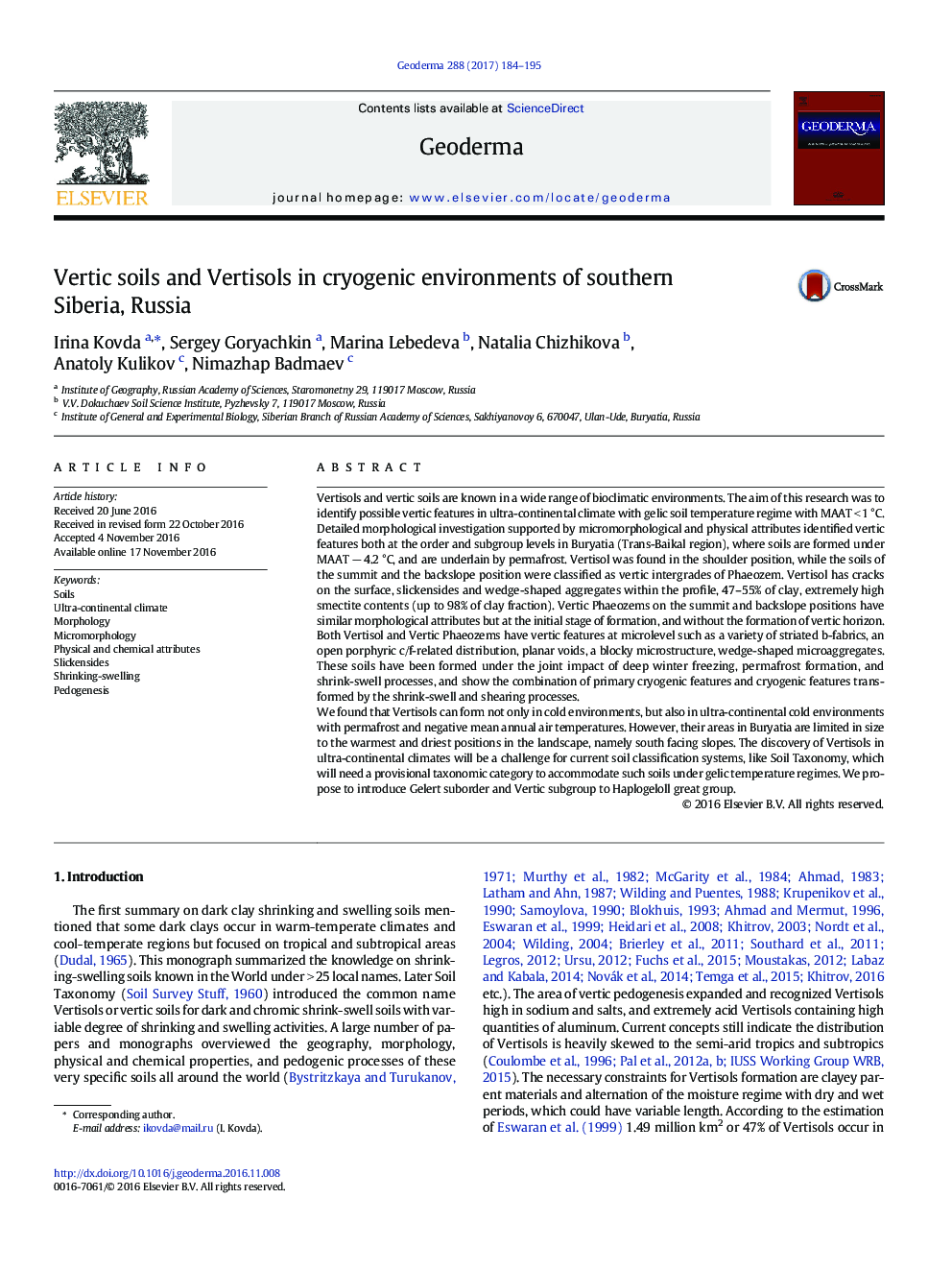| کد مقاله | کد نشریه | سال انتشار | مقاله انگلیسی | نسخه تمام متن |
|---|---|---|---|---|
| 5770497 | 1629429 | 2017 | 12 صفحه PDF | دانلود رایگان |

- Vertisols can form in ultra-continental environment with negative MAST
- Vertisols of ultra-continental environment are polygenetic soils
- Cryogenic attributes formed earlier, while vertic features are younger.
- Formation of vertic features started when depth to permafrost increased and the soil started to shrink/swell
- Gelert suborder and Vertic subgroup are proposed to Haplogeloll
Vertisols and vertic soils are known in a wide range of bioclimatic environments. The aim of this research was to identify possible vertic features in ultra-continental climate with gelic soil temperature regime with MAAT < 1 °C. Detailed morphological investigation supported by micromorphological and physical attributes identified vertic features both at the order and subgroup levels in Buryatia (Trans-Baikal region), where soils are formed under MAAT â 4.2 °C, and are underlain by permafrost. Vertisol was found in the shoulder position, while the soils of the summit and the backslope position were classified as vertic intergrades of Phaeozem. Vertisol has cracks on the surface, slickensides and wedge-shaped aggregates within the profile, 47-55% of clay, extremely high smectite contents (up to 98% of clay fraction). Vertic Phaeozems on the summit and backslope positions have similar morphological attributes but at the initial stage of formation, and without the formation of vertic horizon. Both Vertisol and Vertic Phaeozems have vertic features at microlevel such as a variety of striated b-fabrics, an open porphyric c/f-related distribution, planar voids, a blocky microstructure, wedge-shaped microaggregates. These soils have been formed under the joint impact of deep winter freezing, permafrost formation, and shrink-swell processes, and show the combination of primary cryogenic features and cryogenic features transformed by the shrink-swell and shearing processes.We found that Vertisols can form not only in cold environments, but also in ultra-continental cold environments with permafrost and negative mean annual air temperatures. However, their areas in Buryatia are limited in size to the warmest and driest positions in the landscape, namely south facing slopes. The discovery of Vertisols in ultra-continental climates will be a challenge for current soil classification systems, like Soil Taxonomy, which will need a provisional taxonomic category to accommodate such soils under gelic temperature regimes. We propose to introduce Gelert suborder and Vertic subgroup to Haplogeloll great group.
Journal: Geoderma - Volume 288, 15 February 2017, Pages 184-195